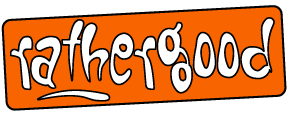Lord Thomson, the Canadian media magnate known for his ownership of The Times and other assets, is credited with the adage “a licence to print money,” referring to his acquisition of the Scottish Television ITV franchise in the 1950s. With exclusive rights to broadcast advertising, profitability was a given.
Today, Thomson might apply that phrase to the streaming sector. Companies like Spotify and Netflix, with their global audiences, have been raising prices and reaping substantial profits.
The streaming industry required significant initial investment but is now rewarding its backers handsomely. Recently, Spotify increased its U.S. subscription fees, its largest market, to $11.99 for the standard plan and $16.99 for the duo plan, following earlier price hikes in the UK.
Similarly, Warner Bros Discovery’s Max raised its U.S. rates by a dollar in anticipation of its hit series “House of Dragon.” Netflix has also upped its fees, tightened controls on password sharing, and Amazon has introduced ads on Prime unless users pay more. What began as affordable entertainment is becoming increasingly costly.
Yet, it’s challenging to fault these companies as their strategies are proving lucrative. Spotify’s stock has surged by 70% since the year’s start, nearing a $70 billion valuation. Netflix’s shares have climbed by 38%, surpassing $250 billion in value.
By enforcing password-sharing rules, Netflix expanded its subscriber count to 269 million globally, adding nine million in the last quarter alone. Its revenue grew by 15% to over $9 billion, with profits soaring by 70%. Spotify’s subscriber and profit numbers are similarly flourishing.
The strategy is straightforward: build a loyal audience over a decade and then extract more revenue from them. Few will cancel their subscriptions over minor price increases. We’ve become dependent on these services.
Thomson would have admired this modern “licence to print money,” which seems sustainable for the foreseeable future, attracting investors to the streaming platforms.
However, such a licence is never permanent. Eventually, industry titans will encounter new competition. Customers will notice the creeping costs. While minor increases may go unnoticed, economic pressures could prompt a reevaluation of non-essential services like streaming.
Moreover, as prices climb, opportunities arise for competitors to offer more affordable alternatives. With existing competition from Apple, YouTube, and Amazon, and potential new entrants like TikTok, the market could shift.
As streaming services become pricier, they risk losing subscribers to lower-cost rivals. Once lost, these customers are hard to regain.
Occasionally, the market offers a “licence to print money” through temporary monopolies. Streaming giants have capitalized on this, creating a new industry and securing a profitable return for their investors.
Yet, this golden era is not guaranteed to last indefinitely, just as the ITV franchise’s profitability was finite. The streaming behemoths may soon face the consequences of their success, potentially sooner than anticipated.
Discover more from Rathergood TV
Subscribe to get the latest posts to your email.

